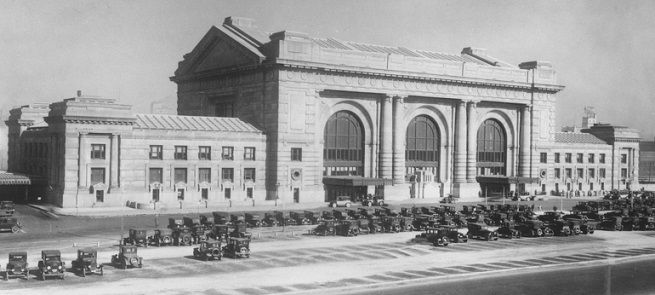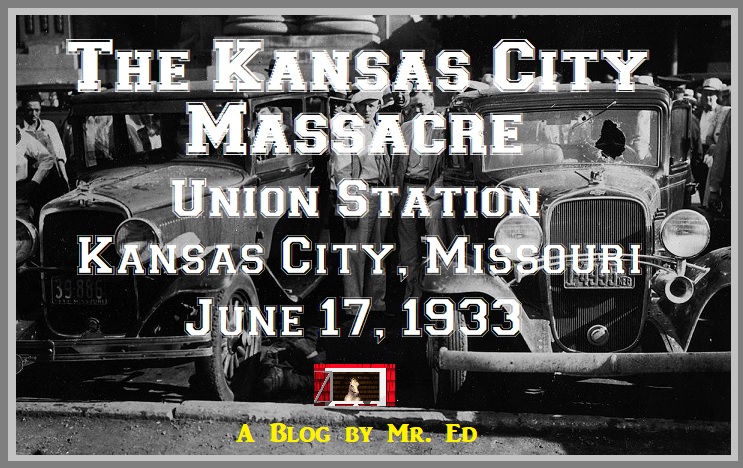
Early picture of Union Station in Kansas City, Missouri, which opened in 1914. Library of Congress photograph.
The Kansas City massacre was the shootout and murder of four law enforcement officers and a criminal fugitive at the Union Station railroad depot in Kansas City, Missouri, on the morning of June 17, 1933. It occurred as part of the attempt by a gang led by Vernon C. "Verne" Miller to free Frank "Jelly" Nash, a federal prisoner. At the time, Nash was in the custody of several law enforcement officers who were returning him to the U.S. Penitentiary at Leavenworth, Kansas, from which he had escaped three years earlier.
Charles "Pretty Boy" Floyd was identified by the FBI as one of the gunmen. However, there is evidence to suggest that Floyd was not involved.
Background ~
Frank Nash was first convicted in 1913. He and a friend, Nollie "Humpy" Wortman, stole nearly $1,000 from a store in Sapulpa, Oklahoma. While escaping, Nash suggested they hide the evidence. As Wortman went to bury the money, Nash shot him in the back. Nash was arrested hours later and sentenced to life in the Oklahoma State Penitentiary. On March 28, 1918, Nash's sentence was reduced to ten years after he convinced the warden he wanted to join the army and fight in World War I. In 1920, Nash was convicted of burglary using explosives, also known as safe-cracking, and sentenced to 25 years in the Oklahoma State Penitentiary. He became a trusty, and his sentence was reduced to five years. On December 29, 1922, Nash was released. On March 3, 1924, Nash began a 25-year sentence at the United States Penitentiary, Leavenworth, in Kansas, for assaulting a mail custodian. He escaped on October 19, 1930.
The FBI launched an intensive search for Nash throughout the entire United States and most of Canada. After an intensive investigation, the FBI concluded that Nash had assisted in the escape of seven prisoners from the United States Penitentiary, Leavenworth, on December 11, 1931.
The investigation also disclosed that Nash had a very close association with Francis L. Keating, Thomas Holden, and several other gunmen who had participated in a number of bank robberies throughout the Midwest. Keating and Holden were apprehended by FBI agents on July 7, 1932, in Kansas City, Missouri. The pair had crucial information about the whereabouts of Nash and eventually divulged that he was hiding out in Hot Springs, Arkansas.
